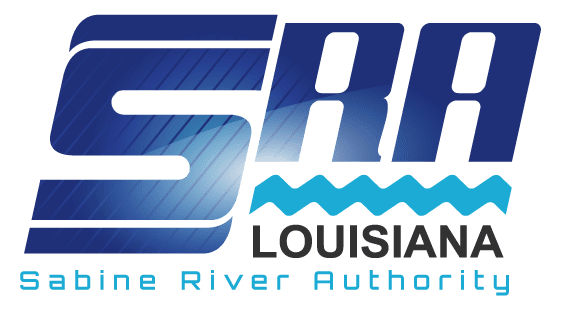Engineering
Lake Level
The 6th and final spillway advisory has been issued, Thursday May 15th at 15:00. All spillway gates are now closed. To view – click here

Current Lake Levels
Generation Schedule
Current Flow: 6280.00 CFS
Generator 1: No Run
Generator 2: Run 24 hrs
Spillway Gates: Closed


The generating schedule for Toledo Bend Dam is available 24/7 by calling (337) 286-LAKE (5253)
IF the spillway gates are open, the road and recreation area below the spill way, will be closed.
Lake Level Presentation
Operation Guide
| MONTH | Reservoir Stage – Ft. MSL | PLANT OPERATION |
| October thru December |
Below 168 Above 168 |
No Power Generated Operate plant up to full capacity. * |
| January |
Below 168.5 Above 168.5 |
No Power Generated Operate plant up to full capacity. * |
| February |
Below 169 Above 169 |
No Power Generated Operate plant up to full capacity. * |
| March |
Below 169.5 Above 169.5 |
No Power Generated Operate plant up to full capacity. * |
| April 1-15 |
Below 170 Above 170 |
No Power Generated Operate plant up to full capacity. * |
| April 15-30 |
Below 171 Above 171 |
No Power Generated Operate plant up to full capacity. * |
| May | Any stage Above 168 ** Above 172 | Use Volume necessary to meet Prime Power Schedule (see Note 2.) |
| June | Any stage Above 168 ** Above 172 |
Use Volume necessary to meet Prime Power Schedule (see Note 2.) Operate plant up to full capacity. * |
| July | Any stage Above 168 ** Above 172 |
Use Volume necessary to meet Prime Power Schedule (see Note 2.) Operate plant up to full capacity. * |
| August | Any stage Above 168 ** Above 172 |
Use Volume necessary to meet Prime Power Schedule (see Note 2.) Operate plant up to full capacity. * |
| September | Any stage Above 168 ** | Use Volume necessary to meet Prime Power Schedule (see Note 2.) |
Notes:
- Maximum turbine discharge: 30,000 acre-feet per day.
- Downstream releases: Must comply with Article VI of the Toledo Bend Project Power Sales Agreement (April 30, 2018).
- Spillway operation: When the pool stage is at or above 172.5 feet (or 172.2 feet if the power plant is under repair or inoperable), operate the spillway according to the Guide on Spillway Gate Operation.
- Control stages: To be maintained when releasing through the power plant, as feasible. Open spillway gates only when levels specified in the Guide on Spillway Gate Operation are met.
- Prime power season: When the lake stage is near the upper limit, closely monitor inflow and make releases through power generation to avoid spillway use when possible.
* Releases should be determined using best judgment, taking into account upstream conditions, Ruliff stage levels, and downstream inflows.
** No generation is allowed below 168 feet msl, except under the following conditions:
- The FERC (or successor agency) mandates a reduction in reservoir water levels for inspection or repair purposes.
- Failure to generate would lead to an insufficient electric power supply for firm or non-interruptible users.
- Failure to generate would result in an inability to meet minimum downstream flow requirements for diversion canal water sales.
- Failure to generate would result in the inability to deter saltwater intrusion into the Sabine River Estuaries.
History

In 1955 the seeds of Toledo Bend as we enjoy it today were sown by both Authorities cooperating under a memorandum of agreement. Studies were undertaken and the results clearly indicated the feasibility of such a project.
Toledo Bend is the largest man-made body of water in the South and the fifth largest in surface acres in the United States. From the dam site, the reservoir extends 65 miles upriver to Logansport, Louisiana and inundates land in Sabine, Shelby, Panola, and Newton Counties in Texas and Sabine, DeSoto, and Vernon Parishes in Louisiana. It was constructed for the purposes of water supply, hydroelectric power generation, and recreation. In all, the lake normally covers an area of 186,000 acres.

Land acquisition began in 1963, with construction of the dam, power plant, and spillway the following year. Following completion of the structures, the power plant began operation in early 1969. Toledo Bend Reservoir is the only public water conservation and hydroelectric project in the nation to be undertaken without federal participation in its permanent financing.
Engineering Staff
Name |
Title |
Phone |
|
Rodney Alan Fulton, II |
Engineer Tech 1 |
(337) 286-5244 |
rodney.fulton@la.gov |
